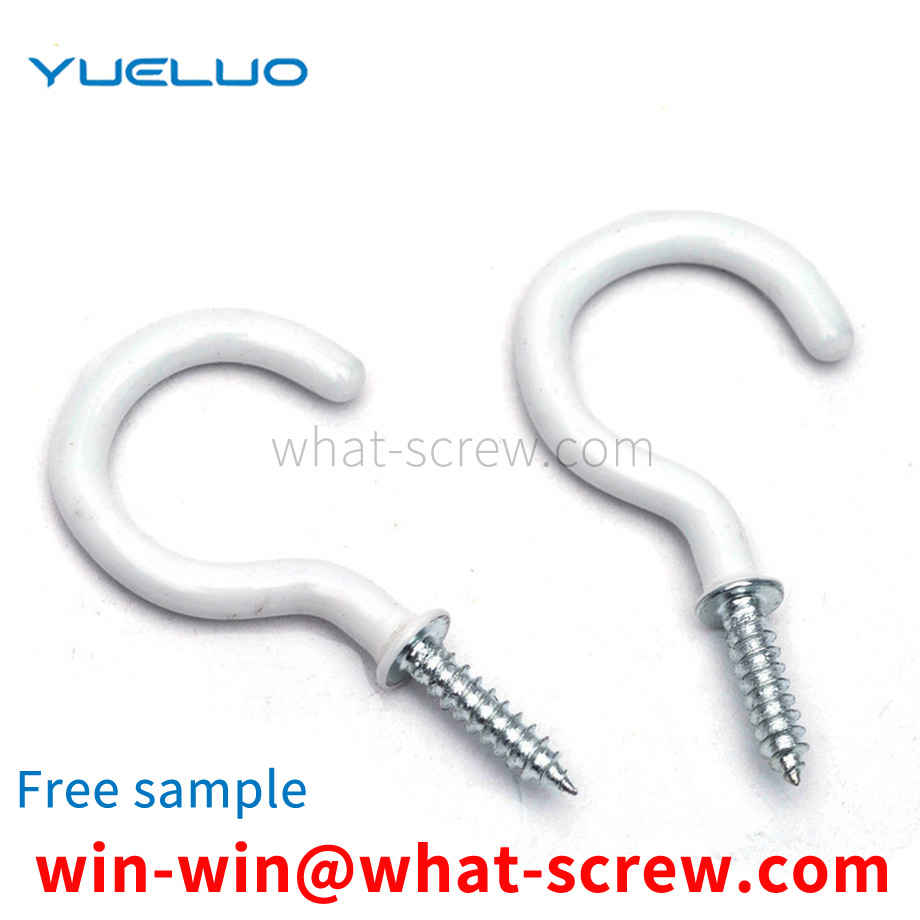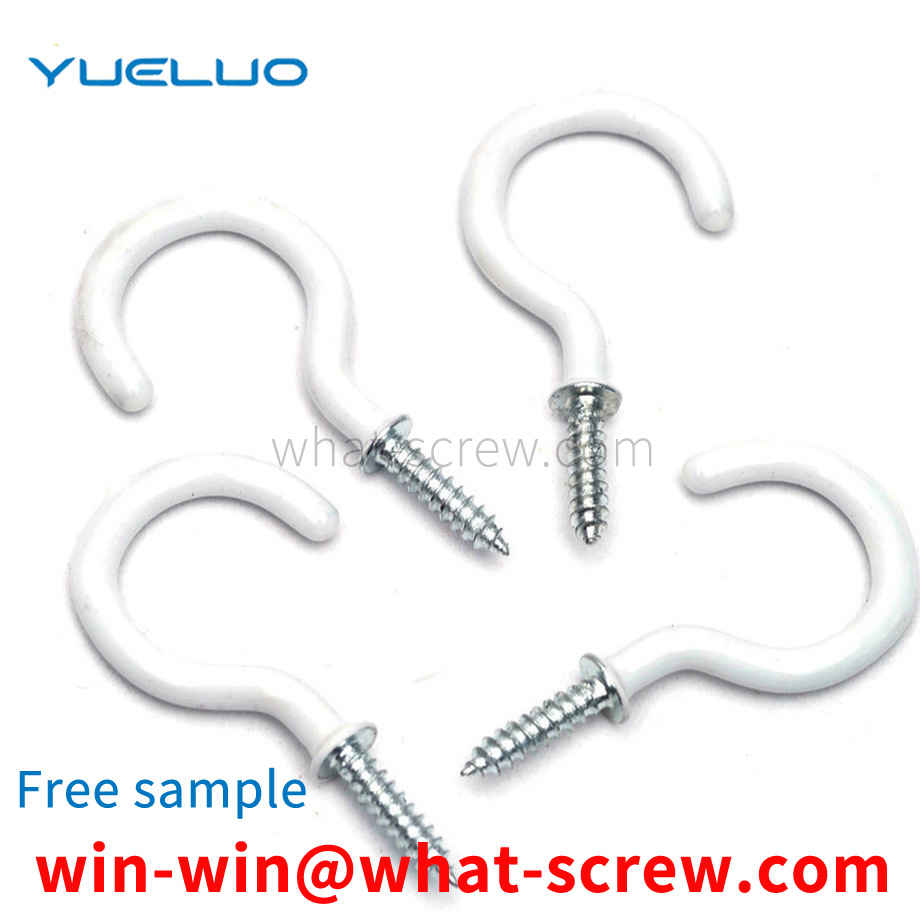When using, after installing the nut and the bolt in place, insert the locking strip from the groove of the bolt, and make the V-shaped locking teeth of the locking strip snap into one of the V-shaped tooth grooves, and push the locking strip into the groove as a whole. The V-shaped locking teeth are stuck in the nut, and the locking strip body is stuck in the groove of the bolt, thereby restricting the relative rotation of the nut and the bolt, and there are threads between the nut and the bolt to restrict their relative sliding, so it can prevent the nut from loosening, even from The bolt falls off; when the nut needs to be disassembled, it is only necessary to pull out the locking strip from the groove, and the nut can be disassembled normally.
Screw, some people call it screw [Screw] (screw), screw (screw rod). In fact, the screw is a general term, and the screw and the screw rod are different from each other. Screws are generally called wood screws; they are the ones with a pointed end at the front and a larger pitch. They are generally used to fasten wooden and plastic parts. The screw rod is a machine screw (machine screw), which is the kind of flat head at the front end. The pitch is small and uniform. It is generally used to fasten metal and machine parts.
The rod end of the ceramic production equipment is installed with the rod shaft, and then fixed by the cylindrical pin. At present, it is purely manual installation. It is impossible to ensure that the cylindrical pin is kept horizontal during the installation process, and the installation pressure of the cylindrical pin cannot be sensed. The pressure is too large. Cracks in the rollers, too low pressure, and easy loosening of the metal cap; it is impossible to install three or more cylindrical pins at the same time, and it is difficult to align the cylindrical pins with the pin holes of the cylindrical pins, resulting in low efficiency.
When the countersunk head screws and hexagon socket head bolts are produced by the cold heading process, the original structure of the steel will directly affect the forming ability of the cold heading process. In the process of cold heading, the plastic deformation of the local area can reach 60%-80%, so the steel must have good plasticity. When the chemical composition of the steel is constant, the metallographic structure is the key factor to determine the plasticity. It is generally believed that the coarse flaky pearlite is not conducive to cold heading forming, while the fine spherical pearlite can significantly improve the plastic deformation ability of the steel. For medium carbon steel and medium carbon alloy steel with a large amount of high-strength bolts, spheroidizing (softening) annealing is performed before cold heading, so as to obtain uniform and fine spheroidized pearlite to better meet the actual production needs. For the softening annealing of medium carbon steel wire rods, the heating temperature should be kept above and below the critical point of the steel, and the heating temperature should not be too high, otherwise tertiary cementite will precipitate along the grain boundary, resulting in cold heading cracking. The wire rod of medium carbon alloy steel is annealed by isothermal spheroidization. After heating at AC1+ (20-30%), the furnace is cooled to slightly lower than Ar1, the temperature is about 700 degrees Celsius for an isothermal period, and then the furnace is cooled to about 500 degrees Celsius and air-cooled. The metallographic structure of the steel changes from coarse to fine, from flake to spherical, and the cracking rate of cold heading will be greatly reduced. The general area of softening annealing temperature for 35\45\ML35\SWRCH35K steel is 715-735 degrees Celsius; while the general heating temperature for spheroidizing annealing of SCM435\40Cr\SCR435 steel is 740-770 degrees Celsius, and the isothermal temperature is 680-700 degrees Celsius.
Stamping die is a special process equipment for processing materials into parts in cold stamping processing, called cold stamping die. Stamping is to use the die installed on the press to apply pressure to the material at room temperature to make it produce Separation or plastic deformation to obtain the required parts of a pressure processing method, the technology generally used is to make corresponding holes and punches on the template, this method cannot meet the requirements for small batches and short delivery time products , the relative cost is relatively high, so a rivet die structure is required to improve the above problems.
We have many years of experience in the production and sales of screws, nuts, flat washers, etc. The main products are: countersunk head flat cup screws, B1196 square welding nuts, square nails and four-claw nail nuts, copper belt screws and rivets and other products, we can provide you with suitable products. Your fastener solution.



















 Service Hotline
Service Hotline




